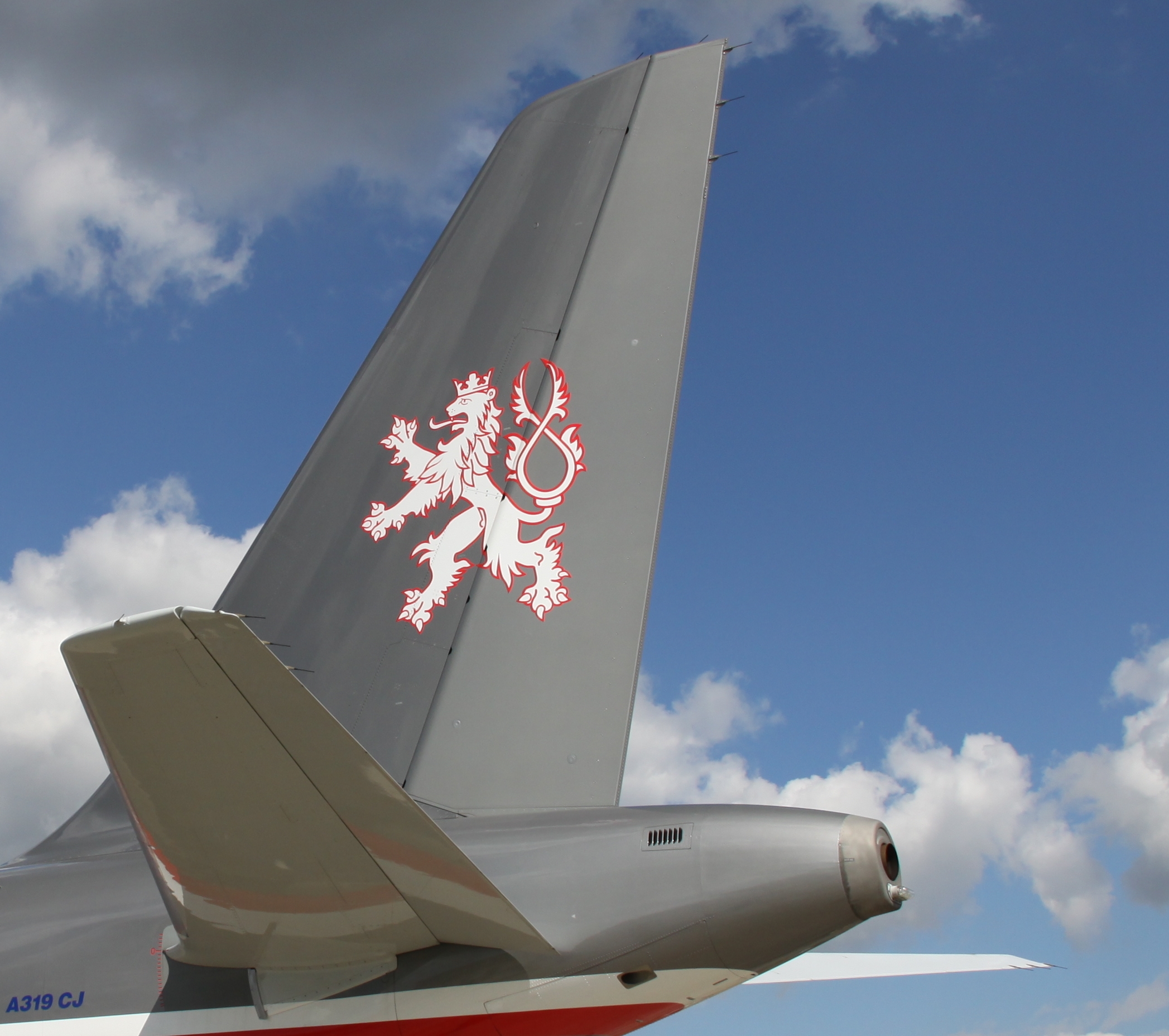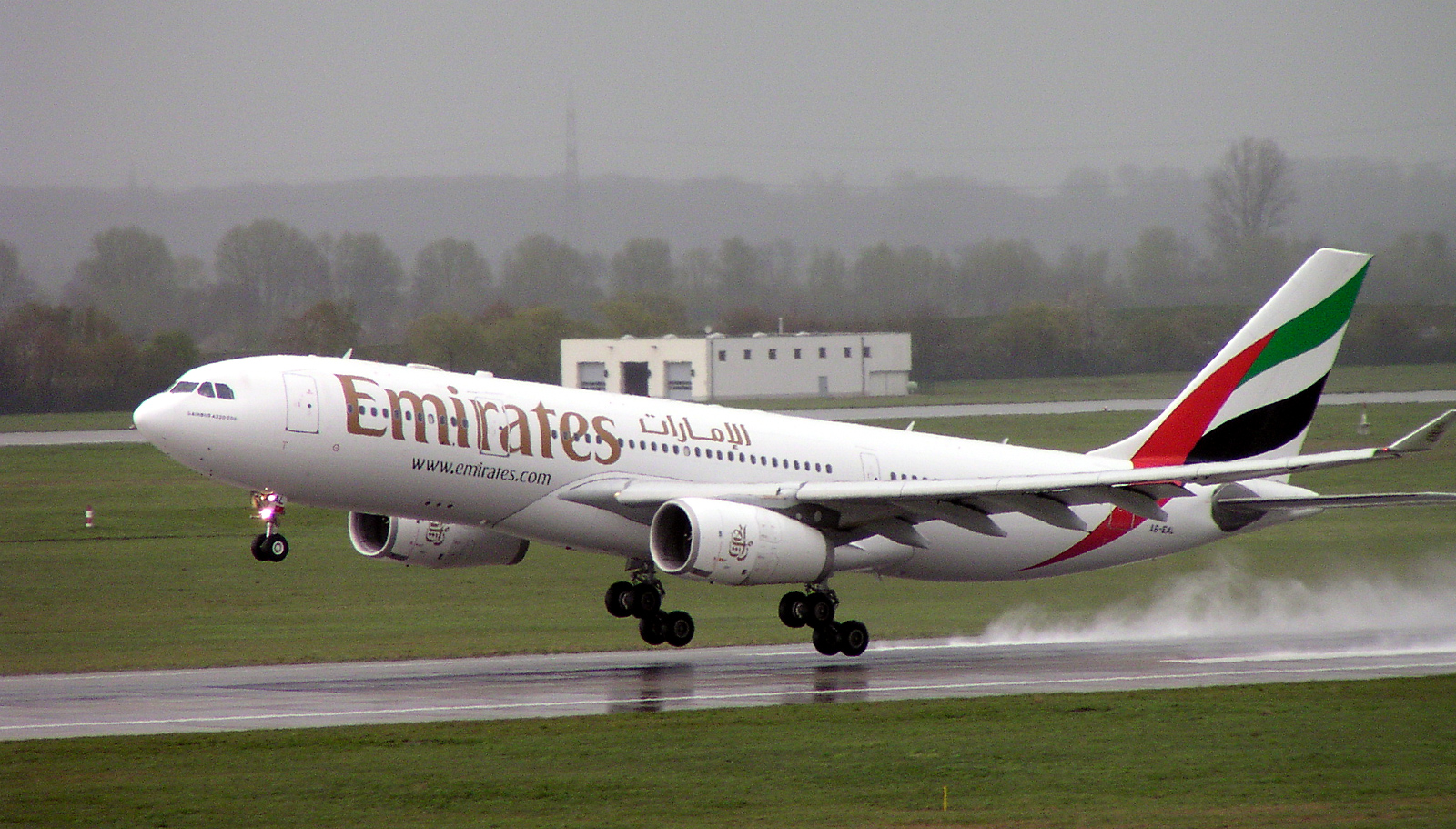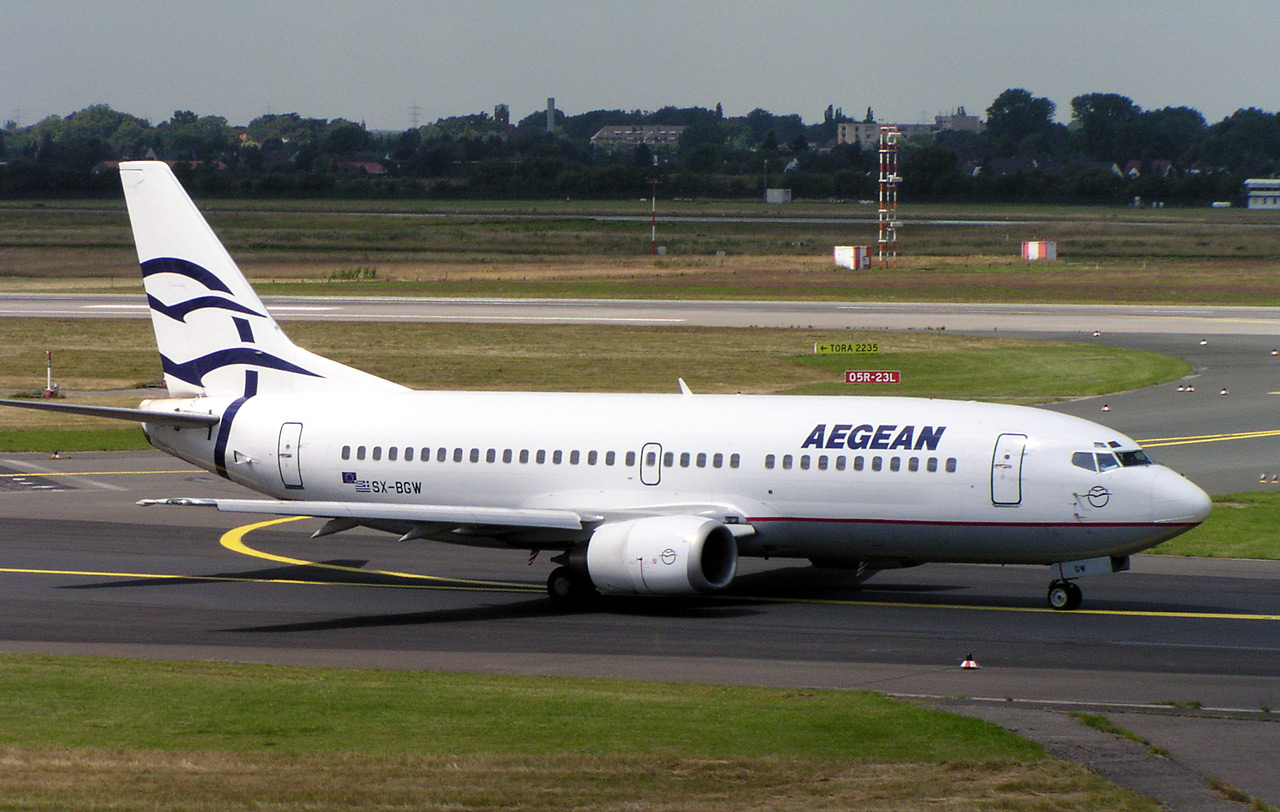We fly so much that one day I decided to look around at the planes and also check out the back of the in-flight magazine until I could tell the difference between the big planes. The big planes were super easy and I picked up some more tricks on telling the difference between planes.
Here is a visual guide to telling the difference between planes, as an infographic. But if you’re the reading type, I wrote out in length the details below. Once you know these tricks, you too will be plane-spotting like a pro.
An infographic by Drew and Caroline at Travel is Free
Want this infographic on your site? Copy and Paste the Code Below
Not everyone loves infographics as much as we do, so I decided to write up my opinions on the tricks I use to tell the difference between planes.
The fact of the matter is that I learned most of this stuff from being in airports a lot. I made it a habit to check the back of the airlines magazine to help me study the differences. I’ve heard of other tricks, but I’ll stick to the tricks that actually work for me.
There are just 2 double deckers.
Double decker planes are unmistakable and they’re huge, so we’ll definitely start there.
Airbus 380 – This is a full double decker and it’s the biggest commercial plane.
Boeing 747 – Only the front half of this plane is a double decker and I think it makes it unique.
When you see the A380… you know. It’s huge. But to me the 747 is equally noticeable when you see the horn. I’ve compared it to a hornbill we saw in Malaysia. Both are only used for very long haul flights, and the 747 is more common – although a lot of airlines have started retiring the 747.
The other big’n – Boeing 777-300
I think of the A380, 747 along with the 777-300. They are all giants, but the first two are double deckers and the 777-300 is just really long.
Also, airlines often make multiple versions of a plane. So the 777 that American Airlines usually flies is a 777-200. The 200 series is shorter, and the 300 series is longer. 777-300 is abbreviated to the 773. And the newer 777-300er is abbreviated the 77w.
The first two are distinct because there is only one full double decker, and one half-double decker. The 773 is distinct because it is much longer than the next batch of planes we’ll talk about. But the best way I noticed for distinguishing the 773 from the slightly smaller versions is that it has 5 doors. If you count 5 doors, you know it’s a 777-300.
Midsize long hauls
Most commonly if it’s not a super long haul that requires one of the first three planes, it requires one of these next planes. The last two times I flew across the Atlantic were on the Airbus 330 and Boeing 777-200. Although, now a lot of long-hauls are starting the new Boing 787 “Dreamliner”.
Now when you’re at the airport it’s hard to tell if the lone plane your looking at is a giant plane, midsize or small. You think you would just be able to look at it and tell it’s a midsize… but I at least am not that good yet.
So the first thing I look at for single decker planes is how many doors it has, still. If it has 4 doors you know you’re talking about this bracket of airplanes:
- 777-200
- A330
- 787
- A340
- A321
Does that make sense? If it has 5 doors it must be a 773. If it has 3 doors, it must be a smaller regional plane. But if it has 4 doors, how do you tell the difference?
A340 – this one has 4 engines, which is unique for this size. However, it’s a little less common than the other planes. But at least we have a distinguishing feature.
But what about the 772, A330, 787 and 321?
Boeing vs Airbus
Let me pause for a second and talk about how to tell the difference between Boeing and Airbus. After all, if it has 4 doors and just two engines (one on each wing) we know it’s likely the A330 or 772. So if we can find the differences between the companies, we can tell the difference between the planes.
Noses
Boeing noses have sharp points, and in general Airbus planes have rounder noses. Although there are some exceptions to the Airbus noses, most planes have that look.
The double decker planes showcase the nose differences most dramatically.
Boeing 747

Airbus 380

Although subtle, can you see the difference in how round the Airbus nose is?
Windows
It’s hard to tell the difference between the windows of the cockpit, but if you’re close enough they are usually pretty distinct.
Airbus cockpit window:

Boeing cockpit window:

The Airbus window is more square, and the Boeing slants. The infographic points this out well.
The tail
Lastly Boeing tails are slightly further back towards the end of the plane. The Airbus’ tails are generally more aligned with the fin tail that sticks up.
Boeing tail:

Airbus tail:

4 door planes
So now if we see a midsize plane, like an A330 or a 777-200, we can find distinguishing boeing-vs-Airbus type features. Unfortunately though, this a tough example. in this case the A330 is one of the Airbus planes that has a sharp nose, and the 772 tail isn’t too different.
But if you can see the windows of the A330 and 772, they are classic brand features.
Also, remember that we can rule out the A340 because it’s the only 4 door plane that has 4 engines.
A330 vs A321
Okay but how do we know if we’re looking at the A330 or A321? Both have 4 doors!
That’s true and it is hard to tell the difference simply because it’s not obvious what size to look for. That being said, the A330 is a lot bigger and taller. It’s not a trick but if you’re good enough to narrow it down, context clues might be able to tell you which one is the long haul version.
But the easy way to tell the difference in A330 and A321 is that the A330 has a pointy boeing-like nose, and the A321 doesn’t. So if you can see the windows to tell it’s an A330 and not a 772, then you can see the nose to see it’s sharp.
Airbus windows with a sharp nose are the A330 or A340… but the A340 has double engines.
If you need another trick, the A330 has double the back wheels, and the A321 has one set of wheels. Big planes double the wheels in the back, and smaller planes don’t. Do you see the double back wheels here?

777-200 vs 787
The 787 dreamliner has a distinct nose as it’s flat on the bottom all the way to the point. Another thing is that the 787 not only doesn’t have square corner cockpit windows (like the Airbus would), it’s pointy like a diamond. Just by looking at these two features in the front you can instantly know that this 4-door Boeing is a 787.

3 Door planes
- Boeing 767
- Boeing 757
Both these planes used for mid range flights are 3 door planes (with two little emergency exits) – the 757 and 767. The quickest way to tell the difference is the n0se, just like the 772 vs 787, but with 3 doors.
The 757 nose is flat all the way to the front. But the 767 angles up to a similar pointy nose.

vs

Smallest Boeing vs 2 door Airbus
- 737
- A320 (and smaller version A319, and A318)
These small 2 door planes used for regional flights are near perfect examples for distinguishing between Boeing and Airbus. The 737 has a pointy nose, slanted cockpit corner windows, and a tail wing that sits further back.


Conclusion
There are of course more planes but I wanted to go through the popular Boeing and Airbus planes that make up all of your mid to long haul flights, and most of your regional and short flights. These are the ways that I learned to tell the difference between planes and if you can keep it all straight, I imagine it will work for you as well.



Sweet! Great job Drew. I might have to put this on my blog.
Thank Carrie for the artsy work!
Awesome! Another thing I don’t have a good handle on, and please point me to the right place if such info already exists, is the width of the fuselage (i.e. inside the cabins). For example, I want to know if a business class is 2-3-2 on a 772, how does that compare to 2-2-2 on A380 upper deck or 787? All I can find is dimensions of the wingspan…
Your comments are increasing becoming a one way conversation
The thing is that you can run the same airplane different ways… if I understand the question right.
For example, AA runs 772s and they have two different seatings. One has economy set up so its 2-5-2 and the other is 3-4-3.
But checkout Seatguru.com, that’s where I do all my seat consulting during booking.
You skipped the easiest features to tell many of these apart. Winglets!
A330/A340 have very distinct winglets. Once you see those you only have to count engines.
B777 does not have winglets
B787 does not have winglets AND has engine sharklets
A320 family has small two sided winglets
That’s a great detail especially given that the a330 and 772 are so stinking similar.
Also on the winglet front, the 737 NGs and A320 family are easily distinguishable by the turned up winglets of the 737s in comparison to the vertical pieces on the end of an A319/20/21 wing
the “engine sharklets” are called chevrons and A320s may also feature sharklets (blended winglets) like those on 737s
Nice post, Drew! My compliments on the drawings.
+1 on winglets.
Split Scimitars are exclusively Boeing – for now. Serrated engine shroud is Dreamliners only – for now. Both the 747 and A380 cannot be mistaken for anything else.
Thanks, that’s a good tip.
A pug, a shark, and an eel… best post ever!
lol, Carrie has a huge crush on pugs, so it’s no surprise that a pug made it in… Not sure about the others. 😀
WOW I am amazed by the post! Thanks! Love it!
Glad you enjoyed it!
Love this. So fun. Thank you for posting!
Glad to hear it.
Thanks for commenting!
So creative and clever. I learned a lot from your infographic!
Glad to hear that as they continually get mixed feed back, lol.
But I think this is a very visual concept so glad we finally made this one.
love the graphics!
Thanks much, we appreciate hearing that after so much work.
For a newbie wannabe #avgeek, this is awesome. Thanks Drew for the infographic! bookmarked 🙂
Great. Very glad to hear it’s gonna be a used resource. I hope. :-p
Good post. An additional easy way to notice 777s are the triple wheels.
Thanks, never noticed that.
Delta used to fly the 747s short distances to avoid the overnight parking fees at NRT. I just checked and they don’t do that anymore.
And I still love you two.
That’s funny. So they would just connect it to another route? LAX-NRT-PVG all on 747?
Can’t wait to see ya again bud!
Just talked with a Delta employee yesterday. They said Delta will halve their 747 fleet in the next year.
Oh interesting. Other airlines are retiring and Delta is getting them. I LOVE that about Delta and can’t understand how AA was announcing the biggest boeing purchase a month after announcing bankruptcy! What the heck.
Wow, thanks! Btw, how do you create these infographics? Would love to know
Well we = Carrie. 😀
But she makes them in Illustrator and photoshop.
Ah no way no mention of winglets… Or emergency doors over the wing. Toyally noon-ish, but a good try 🙂
I just found your site and spent nearly an hour on your posts. I love your story telling and these infographs are just amazing. Keep up the good work, Drew and Carrie. I’ll be following your adventures on Twitter.
a very good info to share !
I would consider the 767 to be mid-sized, its about the same size as an a330. But good job! Also, to tell an ERJ from a CRJ, the ERJ has longer engines and the CRJ has funnel-looking engines.
Very good and indepth explanation.
Thanks a lot.
Awesome information!!!! You should however, include showing the difference between the famous puddle jumpers Boeing 717 and the MD-80. Very similar planes.
Thanks for the info!!!
I think you left out some of the 777’s most distinguishing features. The main gear on the 777 has 3 pairs of wheels on each side, which is unique. Admittedly this is only useful when the gear is visible, but at an airport it usually is. Also the tail of the fuselage comes to a knife like tip instead of a cone or rounded tip on other planes.
One of the biggest distinctions between the 747 and the A380 is that the 747 has it’s cockpit windows on the upper deck, while the A380 has them between decks. But the info-graphic shows the 747’s cockpit windows between the upper and lower decks. Might be confusing.
Hi
I love this article and would love to use bits of it as a plane spotting “quiz” at work (I work in the Aerospace Industry).. would you mind? I would of course leave your website reference on the material – I might cut and paste onto PowerPoint to enable the quiz element.. Could I have your permission to do so? Thanks
Dear Drew and Caroline, I am a teacher and I would like to print your pretty airplane graphics to use with my students. Is there a way that I can do that. I will not sell them, but would like to reproduce them for use in class. Thank you for your help! //Elizabeth Mathews
The numbers of doors on Boeing 757 and 767 depend on variants and configurations, they don’t necessarily have 3 doors only.
For 757-200, there are two configs: 1. 3 doors + 2 emergency exits and 2. 4 doors
757-300 has 4 doors and 2 emergency exits.
Most 767-200 features 2 doors and 1 emergency exits and 767-300(ER) has two configs too: 1. 2 doors and 2 emergency exits and 2. 4 doors (Like the Aeroflot shown)
Hi Dennis good to know. That makes it a bit more complicated. Any other ways to tell 757 or 767 apart from other similar Airbus variants? Thanks
By far the best article I’ve read so far, took my aviation geekiness to a whole another level :))) I’ll be going through pics and drawings until I get it just right. Thank you!
Drew, I really like your infographics, as well as your website generally. Always very useful and informative !
I think a Boeing 737 can be distinguished most easily by looking at its tail. There is a forward sloping ridge extending from the lower end of the front edge of the tail that merge gradually with the roof of the fuselage. This feature is unique to Boeing 737 only. Thanx 🙂
FYI, there a few broken images that you may want to update.